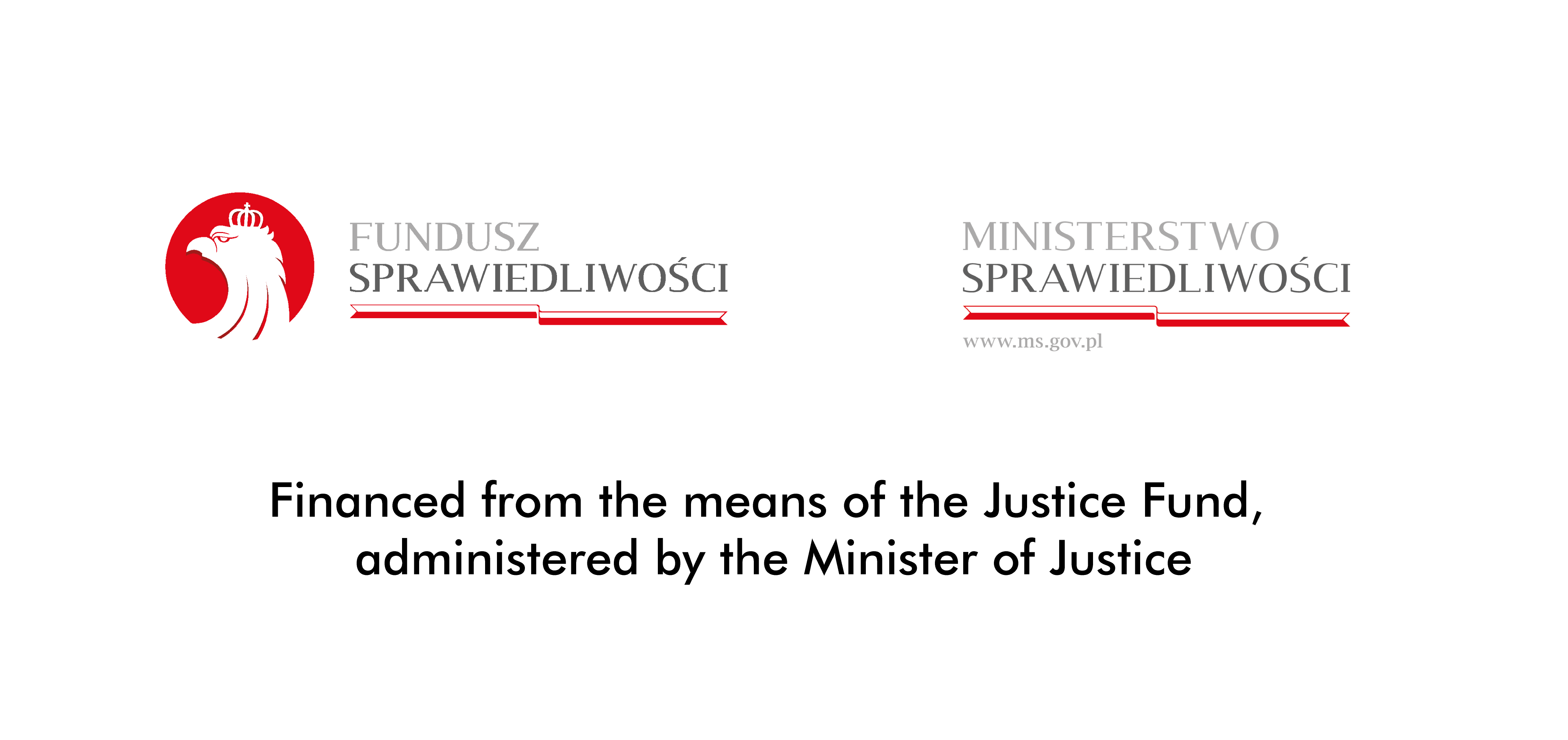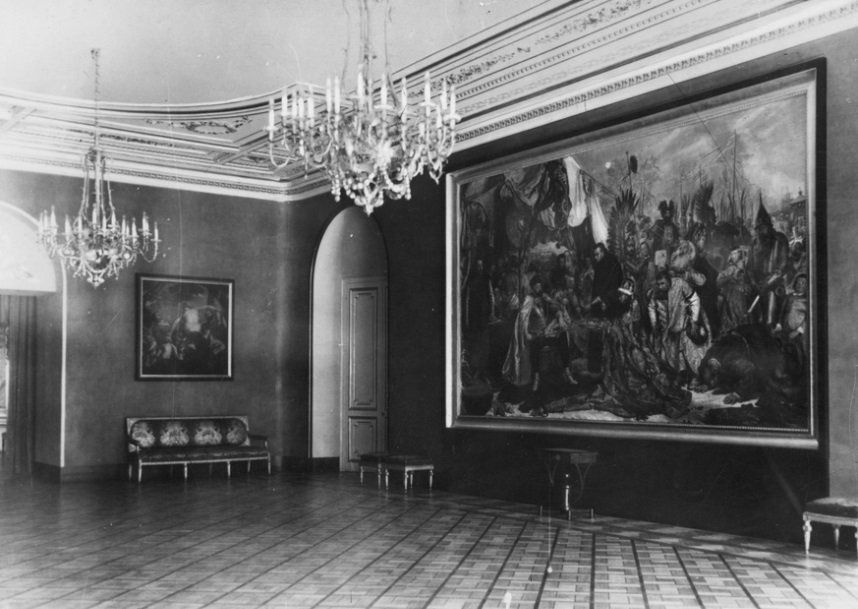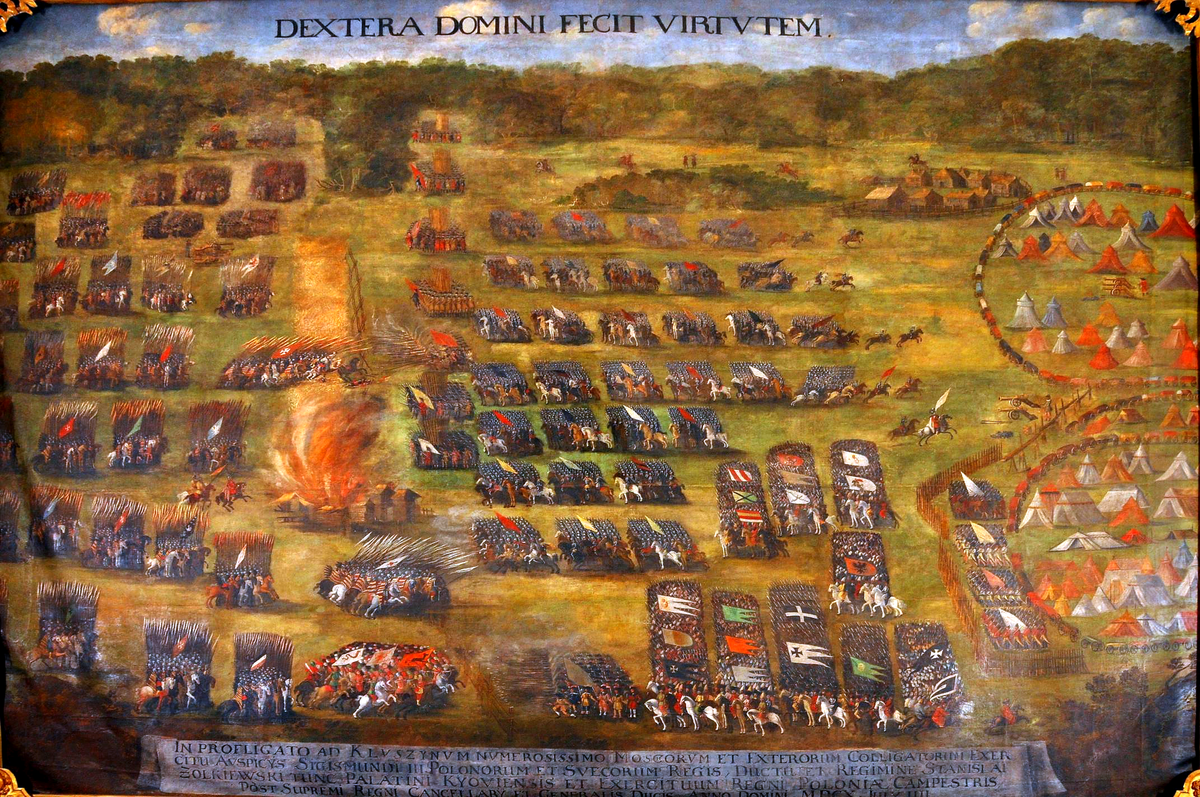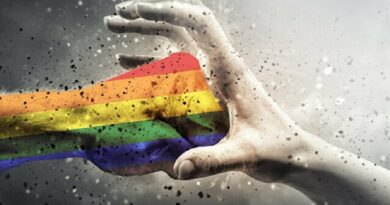Poland as an oasis of freedom: against cancel culture in art

“We are inviting curators and artists representing different views to discuss key cultural issues in the world today. All are amazed by the extraordinary freedom of expression. They have repeatedly brought attention to the fact that such discussions would not be possible in any public institution in the West” – says Piotr Bernatowicz, art historian, critic and curator, director of the Ujazdowski Castle Centre for Contemporary Art in Warsaw.
At a press conference before the opening of the “Political Art” exhibition, you mentioned that in the first years of the Ujazdowski Castle Centre for Contemporary Art, the institution of which you are today the director, you felt very clearly that the Center was a space of freedom. You noted that a lot has changed over these 30 years, that this space of freedom has been disappearing more and more every year. What does this consist of and what is the reason for it?
PIOTR BERNATOWICZ: Thirty years ago, the phenomenon of critical art appeared in Poland. It was largely inspired by progressive critics and art historians from the West, who were fascinated by Polish critics. It is very interesting that at the moment when Marxism in the Soviet edition was bankrupt, many Polish artists and critics succumbed to the fascination of Marxism developed in the West updated by the theorists and philosophers of the 1960s counterculture. Critical art aroused controversy and discussion. Yet major galleries, recognizing that the space of an art institution is a space of experimentation, were opening up to these new radical artistic proposals. There was acquiescence in the art community to challenge dogma. From today’s perspective, it is apparent that this was a kind of tactic against a society attached to tradition. Conservatives, being open-minded and tolerant in principle, succumbed to this tactic. However, it turns out that new dogmas were introduced in place of the old ones. Let me give an example. Critical art artists subjected religious and national symbols to various actions. This stirred resistance, but eventually these works ended up in art collections and are displayed today. In contrast, if today a few artists take on new symbols, such as the quasi-rainbow flag, they are severely attacked, and leftist critics call directly for censorship of these works. It turns out that tolerance as understood by the Left is a one-way street.
Let’s pause for a moment and focus on this conference and this exhibition. You said then that today, freedom is under threat again. Freedom in art? Freedom in general?
I think freedom in general. In Poland, this may not be felt as much, but in the West, for privately expressing beliefs that are incompatible with emancipatory ideology or simply for using the wrong pronoun, you can be stripped of your job and sent to a psychiatrist. Jordan Peterson is quite vocal about this. We recently hosted British dancer and choreographer Rosie Kay at the Ujazdowski Castle. This artist was sent for psychiatric evaluation for criticizing transgender demands in a private conversation, and was subsequently expelled from the group she herself founded. It sounds Kafkaesque, but that’s how the mechanism of cancel culture works. I think that if we don’t counter this madness, sooner or later it will reach us as well.
There are countries about which we have no doubts, like Russia or Belarus. Besides, when the “Political Art” exhibition at the Ujazdowski Castle featured works by, among others, Ales Pushkin from Belarus, the artist was under arrest for criticizing the Belarusian regime. What is the extent of freedom in the West? In countries where democracy has been developing much longer than in Poland, for example.
At the “Political Art” exhibition, we showed a series of paintings by Czech-born artist Jana Zimova referring to the events of the memorable New Year’s Eve in Cologne in 2015, when hundreds of women were raped and sexually assaulted by immigrants. These paintings titled, “Wolves in sheep’s clothing,” although they do not show drastic scenes at all, but only metaphorically refer to that memorable night, cannot be shown in Germany. No gallery chooses to do so, although other paintings by this artist are shown, and works referring to women’s rights are present in almost every exhibition. This shows that the rights of women, LGBT and non-white races are being used purely instrumentally – to attack Western civilization. This was well described by Douglas Murray in his recently published book titled “The War on the West”. We are witnessing the destruction of Western civilization perhaps more from the inside than the outside.

The “Political Art” exhibition would most likely not have been opened in many countries in the West. Besides, it also received a wave of criticism in Poland. Do you want to bring back to the Ujazdowski Castle Art Center that spirit of freedom you felt 30 years ago as a student of art history?
Mainstream media, many prominent members of the art world and seven Jewish organizations including the Chief Rabbi of Poland protested strongly against the exhibition before it even opened, aiming to prevent it from happening. A lawyer and art historian acquaintance told me that he received phone calls from a journalist of a certain newspaper asking what to do, what legal steps could be taken to prevent the opening. The artists received emails from an anonymous organization describing itself as “anti-fascist” urging the artists to withdraw from the exhibition. The opening, however, took place. No artist withdrew. Moreover, even after the opening, not a single accusation or legal charge was formulated against the exhibition, as none of the works violated Polish law in any way. None of the works were labeled as anti-Semitic, etc. It was simply an attack on freedom of artistic expression, which did not meet the expectations of the contemporary left, and perhaps more so exposed the hypocrisy prevalent in leftist circles.
Have any of the supporters of artistic freedom and opponents of censorship commented on this vilification?
Recently, the American organization “Artistic Freedom Initiative” published a report on the threats to artistic freedom in Poland. The report is more than a hundred pages long, and the exhibition “Political Art” was devoted to almost a page. Did the authors of the report defend “Political Art”? Did they stigmatize the campaign to prevent artists from showing their work? On the contrary – they treated it as a threat to artistic freedom! What is particularly intriguing is the fact that the same report discusses the case of an exhibition at the “Arsenal” Gallery in Białystok entitled: “In the beginning was the deed,” which was criticized by the right-wing media for the work of Karol Radziszewski, which was full of vulgarities and obscene drawings. The authors of the report considered the criticism of this exhibition as putting pressure on the gallery management and artists, i.e. a threat to freedom of expression. It is clear that the mainstream applies double standards – radically leftist views are protected, whereas artistic criticism of these views is treated as a threat to freedom.
Does this mean that there is more freedom in Poland than in Western countries?
Yes. Poland is an oasis of freedom in modern Europe. We Poles are unable to appreciate it. For a year now at the Ujazdowski Castle Art Center we have been implementing a series of discussions and meetings entitled: “Cultural Tensions.” We are inviting curators and artists representing different views to discuss key cultural issues in the world today. All are amazed by the extraordinary freedom of expression. They have repeatedly brought attention to the fact that such discussions would not be possible in any public institution in the West.
The Ujazdowski Castle Art Center was created at the end of communism in Poland. Today we live in a completely different reality, it would seem, in a time and civilization of unfettered freedom. Of course, this is not the case, and some compare LGBT ideology to communism. In terms of restricting artistic freedom, do you see parallels here?
I think that emancipatory ideology, which instrumentalizes the issue of sexuality, just as communism instrumentalized the issue of property and labor, is in some ways more dangerous than communism. This is the kind of soft totalitarianism that Aldous Huxley described in “Brave New World”. Power is not about coercion and control – like in “1984”. It is about stupefying society through consumption. However, it’s not like we have good liberals and conservatives on one side and bad communism on the other. Communism was possible because liberalism changed the concept of freedom by equating it with self-will. Liberalism and 19th century capitalism paved the way for communism and bears responsibility for it. Archbishop Fulton J. Sheen writes aptly about this in his book “Communism and the Conscience of the West.” Likewise today – neoliberalism and corporate capitalism is paving the way for a new totalitarianism: emancipatory ideology. What is happening today in the cultural sphere will appear tomorrow in other spheres of life. Those most under attack are those who did not stop at superficial criticism of communism and the new totalitarianism, but pointed to its deeper roots. These included St. John Paul II. And he was the first to be attacked in art, when Italian artist Maurizio Cattelan symbolically threw him off a statue and knocked him down with a meteorite. This was happening at the beginning of the century. If a politician at the time had called for the toppling of monuments honoring St. John Paul II, his political career would have been over. Today, it is politicians who are calling for erasing the memory of John Paul II.

I recently watched an interview conducted with a Polish celebrity who didn’t flaunt it, but also didn’t hide the fact that she is a person of faith, attached to traditional values. The journalist made an accusation against her from the fact that, responding to a fan’s question on social media, she wrote that she does not celebrate Halloween in any way, and quickly moved on from this accusation to another – that she “does not support the LGBT community.” The celebrity in question asked if her interlocutor had ever noticed her referring badly to that community, to which he replied that “no, but he doesn’t support it either.” The conversation, to my amazement, ended with the interviewee declaring that she would go to the Equality March to show her support. That is, today we are subjected to criticism, molding or even censorship no longer just for what we do, but also for what we don’t do.
In a recently produced film about Maryla Rodowicz, there i a scene when Daniel Olbrychski talks about the collection of signatures for a letter in defense of the shipyard workers in 1979. Maryla Rodowicz also wanted to sign this letter, but in the end she did not, because it would have meant the end of her career. She would have been cut off from the mass media. It’s probably similar with the previously mentioned celebrity. By going to the Equality March – although she may not be fully convinced to do so in heart – she is also “sacrificing” herself for her career, although it should be noted that in 1979 there was much more to lose. But today there is more to gain for it.
As you rightly observed in the brochure for the “Political Art” exhibition, women’s rights are fought for where discrimination is marginal, but there is silence about places where it is legal to stonewall women. Much is said about the victims of the Holocaust, but the topic of victims of the Gulag is virtually non-existent. You even said that, “the contemporary art world walks hand in hand with the regime of Alexander Lukashenko.” Why is there so much hypocrisy in the art world, although this is probably just a reflection of the broader context? How do we deal with it?
I think it’s a question of language. I think the elites today are using a different language than the majority of society. The words are the same, but the meaning they are given is different. E.g. the concept of patriotism is socially unambiguously positive, but the cultural and artistic elites are already approaching this term very suspiciously. To them it is associated with nationalism, and this in turn leads to an association with fascism, which is the greatest evil in the ethical system of the elite. This is why the artistic elites, who easily label someone who seeks, for example, patriotic attitudes in art a “fascist”, go hand in hand with the Lukashenko regime, which convicted an artist of paintings depicting Belarusian patriots for promoting fascism. What is causing this change in language? I think a kind of linguistic engineering, which can be seen in the media, but also in school textbooks, which are written, after all, by academics infected with this newspeak. Changing this, getting out of the beaten ruts is not easy and arouses resistance.
Another interesting exhibition held recently at the Ujazdowski Castle Art Center was devoted to the Soros Centers for Contemporary Art (SCCA). Again, a stick in the anthill, the name of George Soros acts on people who are emotional about politics like a gong on a boxer. The right sees Soros as the personification of evil, the left reduces everything to a conspiracy theory. The title of the exposition is “Influence Machine.” What in fact were Soros centers? A machine of influence?
The George Soros Foundation has contributed greatly to the popularization of art that engages in social processes in post-totalitarian countries, or, more precisely, that focuses on the potential for social conflict. Any reasonable person who observed the development of this kind of art in Western countries from the 1960s onward knew that it did not foster social integration, on the contrary, it fueled social antagonisms and tensions. Such was also the effect of Polish critical art. By striking at traditional values in the name of freedom, it violated the immune system of Polish society severely weakened after the communist era. Of course, it wasn’t just Soros’ foundation that contributed to this, it could be said to be a broader movement of cultural revolution. But Soros by no means remained passive.
Who was or is subjected to this influence. What effect has been achieved? Not just culturally, but more broadly – socially?
One of the effects is also the linguistic change highlighted above. An open society, according to Soros’ concept based on Karl Popper’s philosophy, is a society distancing itself from, among other things, national identity, which has been negatively characterized as a potential source of fascist tendencies.

“All exhibitions are propaganda. This one talks about it frankly and actively conveys what SCCA’s history teaches about making propaganda as art and vice versa,” states the brochure for “The Influencing Machine.” In fact, are all exhibitions propaganda? Has it always been this way?
Aaron Moulton is right in the sense that contemporary exhibitions not only present art, but also propagate some way of thinking, some worldview or some ideology. Visual arts work on emotions and are often very persuasive. It is important to be aware of the fact that art can be an incredibly persuasive tool on the one hand, and on the other hand it is vital to treat the viewer candidly and not manipulate him. The Contemporary Art Center is currently hosting an exhibition of contemporary Ukrainian art that tells the story of the situation surrounding Russia’s aggression against Ukraine. It was easy to steer the pronunciation of the exhibition towards strong propaganda, to gather works with an unambiguous visual message that directly attacks the viewer and forces an emotional reaction on him, so to speak, beyond his will. We tried to avoid this, on the assumption that such a message is given by the media, and the art exhibition should tell the story of this situation on a different level. It’s not that it changes meanings and blurs the line between victim and attacker. Rather, it works with other means, talks about this war in a different tone, draws attention to other aspects that escape – obviously – war correspondents. This does not change the fact that the exhibition is one clear anti-war and pro-Ukrainian voice. In this sense, it is also some form of propaganda.
By swimming against the tide, organizing this type of exhibition, and not keeping silent about certain topics that are “inappropriate” to talk about, the Ujazdowski Castle Center for Contemporary Art and you, as its director, are exposed to various attacks. Have you felt the cancel culture on your own skin?
I think that in the case of contemporary art, controversiality is an advantage, not a disadvantage. If I were in charge of the National Museum, it would probably require a different approach. However, the CCA has always been an institution that says through art what is “inappropriate” to say. In this sense, I am simply continuing the idea of the founders of this institution and previous directors.
In conclusion, let’s talk more about the plans of the Ujazdowski Castle Art Center. The short-term, that already materializing, as well as those more distant. How do you envision the activities and role of the Art Center in the future?
My goal is for the Ujazdowski Castle CCA to become a place of artistic freedom unique in the world. So that the art exhibitions and projects that take place there would, on the one hand, escape the ruts in which the world of contemporary art follows, and on the other hand, constitute events that stimulate discussion and reflection. In no way a place that propels boredom. Next year, we are planning, among other things, several exhibitions of foreign female artists, who provide a critical lens on the contemporary radical left movement from a feminist perspective, as well as a Norwegian painter who successfully goes against the current of contemporary trends in art and painting, provoking the art world.
The interview was conducted by Radosław Wojtas.




